Blog Archive
Summer Escapism: Coney Island Dreaming
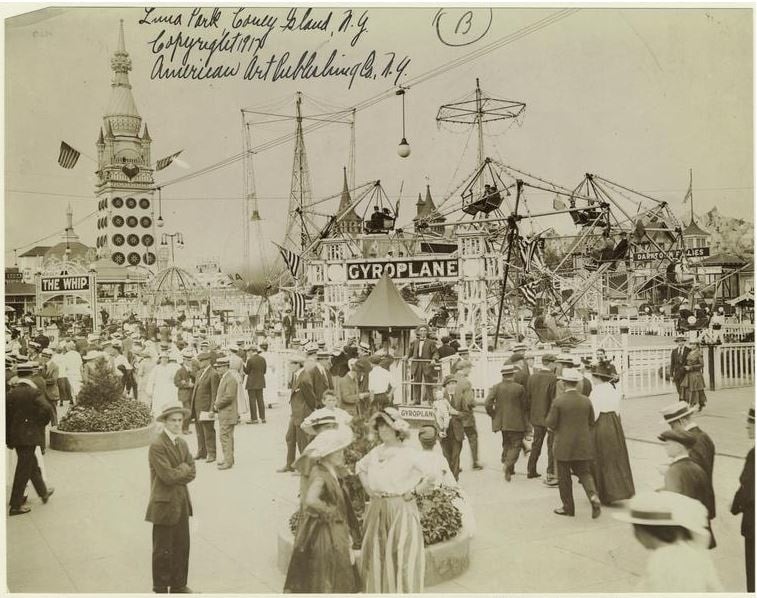
Coney Island’s Luna Park, one of the Island’s most popular amusement parks, photographed in 1917. Photo courtesy of the New York Public Library.
It’s summertime and you want to get away from it all? You aren’t the only one. Despite limited means, Lower East Siders often tried to find a little escape from their routines. For a time, from around 1880 to 1911, one of the most popular destinations for working-class new Yorkers was Coney Island.
In the early 1870s Coney Island was a lovely, if lonely, stretch of beach with just a few inns and bathhouses. In the later 1870’s the multiple municipal train lines finally linked the beachfront to Manhattan, which allowed visitors to pay a relatively inexpensive fare to reach the shore. A regularly scheduled steamship arrived to shuttle visitors by 1880. When Coney Island initially developed it was as economically stratified as Manhattan. First wealthy families settled Manhattan Beach as a season-long destination, bringing their entire households, including servants to high-end establishments Oriental Hotel and its competitors. Norton’s point, was a rough destination for men on their own, who gambled, fought and visited brothels. West Brighton became a destination for middle-class families traveling for day excursions.
By 1900 Coney Island had attracted the weekend crowd that would make it famous – as many as 300,000 to 500,000 visitors descended on Saturdays, Sundays and holidays. Middle and working-class families began to throng the Island, and attractions began to cater to the tastes of these new consumers. In 1896 Captain Paul Boyton collected few attractions close together for his Sea Lion Park. Sea Lion Park boasted of sea lions (naturally) and an ride called “shoot-the-chutes” among other themed amusements. The success of Boyton’s park inspired entrepreneur George Tilyou to create Steeplechase Park in 1897 and subsequently Dreamland and Luna Park attractions.
With the consolidation of the beachfront attractions into organized parks, Coney Island’s culture began to shift again. Concession stands were now largely leased out through the larger “parks,” which streamlined the experience. The parks were suddenly pitched to attract the largest possible audience. Some establishments served soda, rather than alcohol, and heavily marketed themselves as family friendly establishments.
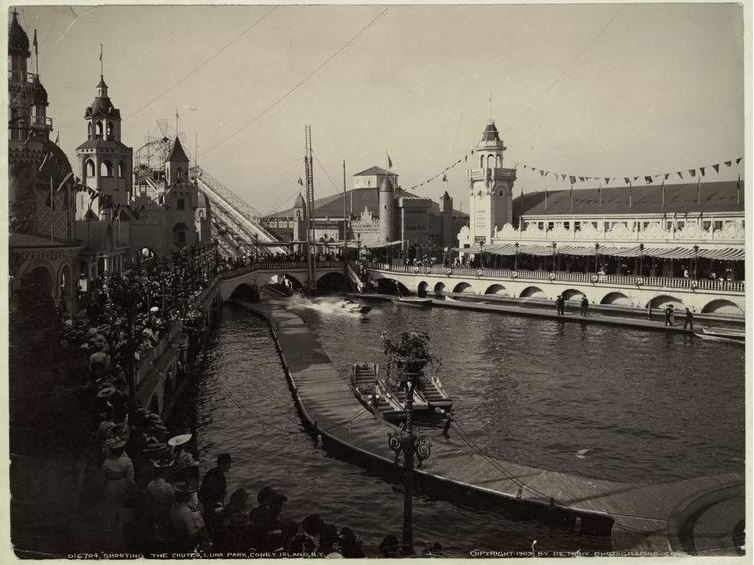
Visitor’s enjoy the Shoot-the-Chutes attraction in Sea Lion Park. Photo courtesy of the New York Public LIbrary.
The plan worked. The parks became so wildly popular that they attracted all classes and began to erode the distinctions between the way these groups spent their leisure time. Coney Island amusements helped crumble some of the staunch Victorian insistence on middle-class conduct. Popular participation in the amusements helped to create mass culture on a whole new scale.
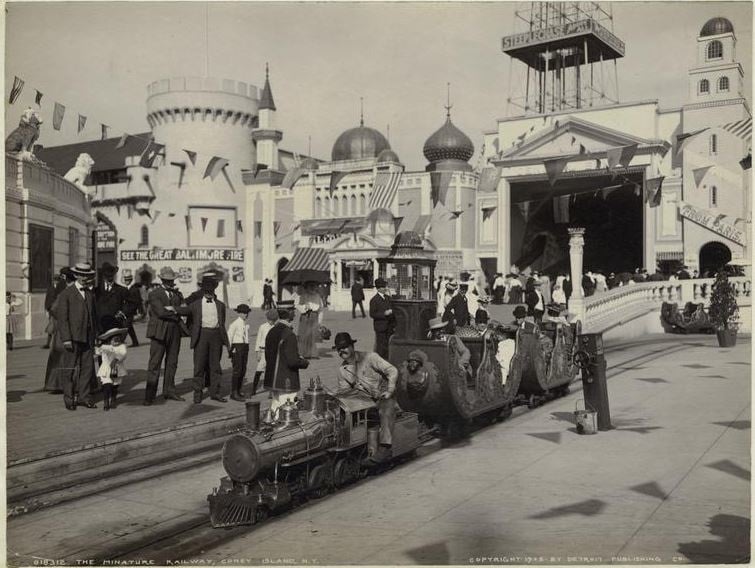
Another ride at a Coney, a successor to Tilyou’s original Steeplechase concept featuring mechanical horses. This photograph is dated 1905. Photo courtesy of the New York Public Library.
Dreamland and Luna Park provided opportunities to do things that most people, married or single were never able to do. They could laugh, mingle, flirt, and touch the opposite sex in public! Swimming, sliding, falling and any number of other sensations were encouraged by the amusement park rides. These unfamiliar activities broke down the expected codes of conduct and put park-goers in touch with sensations society had largely taught them to bury or suppress. It seems only fitting that Sigmund Frued, pioneer of the unconscious, visited the park in 1909. One park even contained an attraction called Fire and Flames, which contained a staged disaster where firemen battled for a tenement building (covered in asbestos) that went up in flames twice a day.
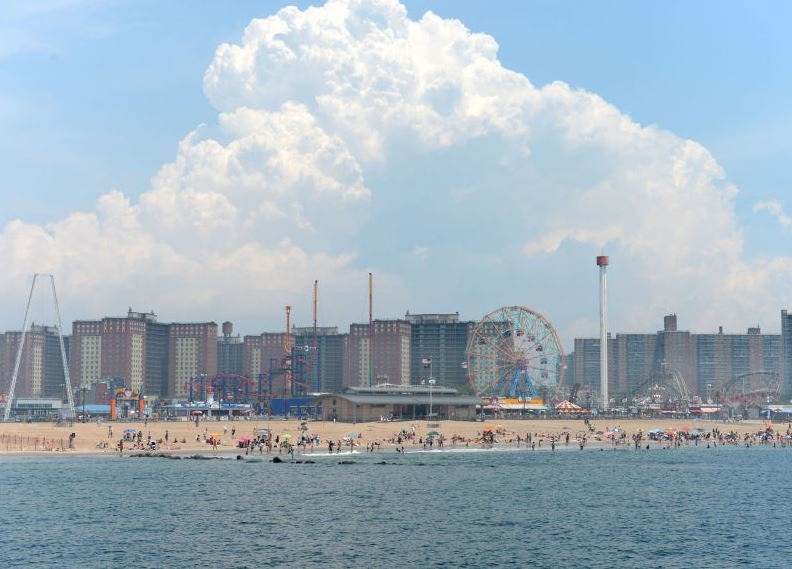
Still a beloved summertime destination for New Yorkers, Coney Island has recently survived the impact of Hurricane Sandy and a boardwalk fire. Photography courtesy of New York Department of Parks and Recreation.
Eventually Coney Island’s popularity waned. Coney never quite recovered the controlled magic it once wielded, after Dreamland itself burned to the ground in 1911. Following World War One more tangible technologies like the automobile, the airplane and eventually television replaced the park as Americans’ perferred amusements. Coney Island has survived even the immense power of Hurricane Sandy and remains a popular summertime destination for New Yorkers.
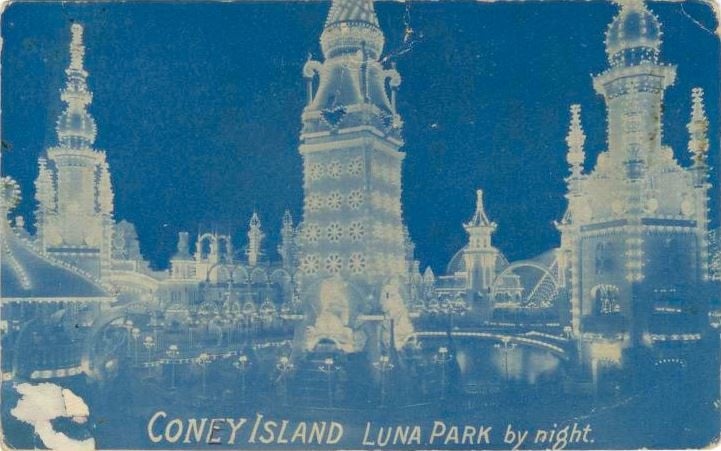
A dreamlike image of Luna Park at night. The Park’s popularity coincided with the debut of electric lighting for display and public space. Photo courtesy of the New York Public Library.
Some fantasies of the old Coney Island will always survive from a time when Americans played in Dreamland.
– By Julia Berick